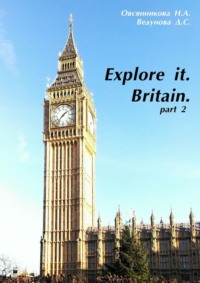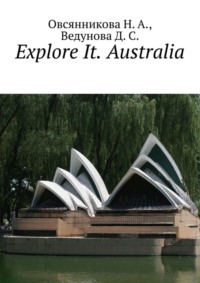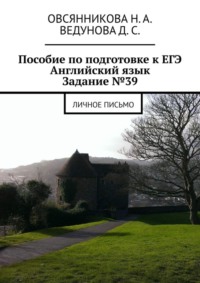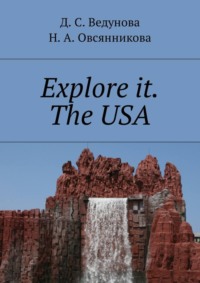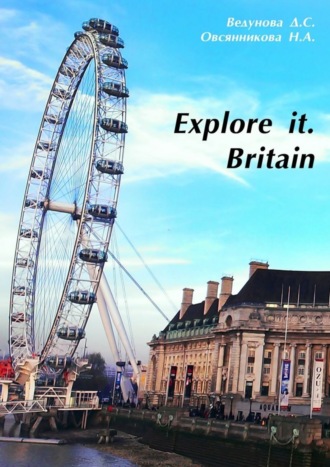
Полная версия
Explore it. Britain
The official language of Northern Ireland is English, although some Catholic schools teach Gaelic.
Education and the arts. Primary and secondary education compulsory for all children aged 5 to 16 years in Northern Ireland. One must pass some exams to enter technical schools. The higher education system includes technical colleges, universities and teacher training colleges. Queen’s University of Belfast, founded in 1845, is known for its medical school and as a center for the study of humanities and technical sciences. University of Ulster in Coleraine was created in 1984 through the merger of the New University of Ulster and the Ulster Polytechnic Institute.
Arts Council of Northern Ireland which is subsidized by the state is engaged in mass propaganda of art. It is responsible for the Fine Arts Center Gallery in Belfast and Londonderry. Ulster Museum in Belfast has an art gallery with an extensive collection of works by Irish artists, European masters of 17—18th centuries and early British watercolors. There is also a rich collection of Irish coins, silver and glassware. A remarkable cultural heritage of Northern Ireland is also displayed at the national Museum in Ulster Kultre near Belfast.
Government and Politics. Since 1920 Northern Ireland was governed in accordance with the Act on the Government of Ireland. The Act provides a substantial degree of autonomy for the Parliament of Northern Ireland. The meetings of the Parliament of Northern Ireland are held in Stormont. The Parliament consists of the Senate, the House of Commons and the Governor is the representative of the British monarch. In 1972, however, the British government appointed a break in the work of the Northern Ireland Parliament. The legislative power was transferred to the British Parliament, and the executive was transferred to the Minister of State for Northern Ireland.
According to the Constitution Bill of Northern Ireland in 1973, the country system of government has been reorganized. The system of proportional representation provided a fair number of places to the Catholic minority. The Assembly had limited rights. Issues related to foreign policy, military, elections and benefits, certain taxes were left for Parliament.
Economy. Northern Ireland is the poorest part of the United Kingdom. Its economy is traditionally focused on agriculture. In most areas, with the exception of County Fermanagh and Tyrone western part of the county where the land is used mainly for grazing, mixed farming is common and farmers are engaged in the cultivation of both crops and raising livestock. Gradually, however, the number of farms is reduced. Large farms equipped with modern appliances appear instead of them. The main agricultural products here are milk, meat, bacon, eggs, oats, potatoes and barley. In Northern Ireland, the mining industry is not developed and it has to import energy resources from the UK. Lignite, iron ore, bauxite, lead, and copper ores can be found in the area of Northern Ireland, but it’s not profitable to extract them. This advanced development of limestone, sand, gravel. Industry is concentrated in the areas of major ports. One of the most famous ports in the entire United Kingdom is Belfast. Among the other major ports there are Larne and Londonderry Industries have been concentrated in the eastern part of the country since the 19th century. The most important are branches of the textile industry and shipbuilding. In the postwar period there was the replacement of old industries and new industries such as space and electronic.
Questions on the basis of the material studied:
1. What is the total area of Northern Ireland?
2. Name the largest city of Northern Ireland.
Rivers and lakes of the UK
Britain is rich with water resources. Almost throughout the country except for some south-eastern regions, the amount of rainfall exceeds evaporation, and therefore there is a dense network of deep rivers. The largest of them are the Severn having a length of 354 km, and the Thames – 338 km. Thames has the greatest value to the UK economy.
There are many rivers in the UK, but they are short and are situated close to each other. This allowed creating a dense network of waterways, which were widely used until the development of rail transport. Now these ways are mostly used in sport. This has also created a lot of ports; some have grown into large industrial units. A good accessibility for maritime transport is particularly important for the island countries.
Rivers of lowlands are quiet. In the mountain areas of Scotland and Wales, the origins of rivers are quite high so the rivers are fast; they often overflow the banks, especially in the rainy season. Rapid rivers north-west of Scotland and Wales are used to produce electricity. More than 60 hydropower plants were built there.
The UK’s largest rivers are the Thames, Severn, Humber, Mersey, Clyde and Forth. They are deep and have artificially straightened bays. The largest seaports and industrial centers are placed there. Sometimes, salt water penetrates the upstream so the majority of the population of sea ports is supplied with drinking water from the underground reservoirs and mountain lakes.
The largest lakes of Great Britain are Loch Tay (about 400 km2) in Northern Ireland, as well as Loch Lomond and Loch Ness in Scotland. The Lake District is very picturesque and attracts many tourists to numerous lakes of Highlands. They are used as transport routes of the local destination. So Loch Ness and Loch Lomond, located in the Great Glen and the combined channel, create a direct water route between the east and the west coast of Scotland. The Lake District has long been the supplier of fresh water for Manchester. In the flat part of the UK a lot of artificial lakes were created.
The main source of high-quality water for the population of low-lying parts of Britain are the underground reservoirs. Currently, underground reservoirs provide 2/5 of all water consumed in England and Wales. In addition to natural waterways significant work to improve access to sea ports a wide network of canals was constructed
Questions on the basis of the material studied:
1. What are the largest lakes of Great Britain?
2. What are the biggest UK Rivers?
Climate of the UK
Now we are going to talk about the climate of the UK. Natural features of the UK in many ways are similar to the neighboring countries of Western Europe. This is not surprising, as the British Isles, are located on the continental shelf, separated from the mainland only in recent geological time. The coastline of the North Sea and the English Channel took shape, similar to a modern, only a few thousand years ago. The facts that the UK is an island and the proximity of the warm North Atlantic Current, a strong segmentation coastline have a certain effect on the nature of this country. This affects in prevalence of moderate temperatures, high humidity, the extraordinary abundance of surface water, the spread of deciduous forests and moorlands. The climate of the British Isles is affected by the closeness of the ocean and especially the Gulf Stream. Traditional English weather is rain and dampness. Winter temperature rarely drops below zero (on average 3—5°C). The most severe weather conditions are in the Highlands of Scotland, Wales and the North of Scotland; in the western part of the UK climate is wetter than in the east because of the prevailing westerly winds from the Atlantic Ocean. The oceanic nature of the UK climate impacts in the prevalence of unstable weather with gusty winds and dense fog throughout the year. The winters are very wet and unusually soft, with a sharp anomaly temperature (about 12—15 degrees) than the average latitudinal values. “The average temperature of the coldest month – January – does not fall below 3.5 degrees, even in the extreme north-east of the UK, and in the southwest it reaches 5.5 degrees. And the plants vegetate there all year round. The masses of warm sea air, coming from the south-west, winter temperatures increase, but at the same time they bring cloudy and rainy weather, with strong winds and storms. When there is the invasion of cold air from the east and north-east frosty weather establishes for a long time. Snow falls in winter throughout the country, but it’s very uneven. In mountainous areas of Scotland the snow cover lasts at least 1—1.5 months. In the south of England, and especially on its south-west snow falls rarely and lasts for no more than a week. Here, the grass is green all year round. In the west of the UK twice as much rainfall falls over the winter than in summer. In the eastern regions winters are colder and less humid. In the spring the blowing of cold northerly winds, significantly delays the growth of crops in the east of Scotland. This time of year is usually the least rainy. Spring in the British Isles is cooler and longer than at the same latitudes in the continent. In Britain, as in other countries with a maritime climate, summers are relatively cool: the average temperature of the warmest month which is July is 1—2 degrees lower than at the same latitudes at the continent. The maximum temperature in the south-east of England sometimes rises above 27 degrees, and sometimes even up to 32 degrees. Maximum precipitation is in the second half of summer. Autumn intensifies cyclonic activity, the weather becomes cloudy and rainy, sometimes with violent storms, especially in September and October.
Конец ознакомительного фрагмента.
Текст предоставлен ООО «ЛитРес».
Прочитайте эту книгу целиком, купив полную легальную версию на ЛитРес.
Безопасно оплатить книгу можно банковской картой Visa, MasterCard, Maestro, со счета мобильного телефона, с платежного терминала, в салоне МТС или Связной, через PayPal, WebMoney, Яндекс.Деньги, QIWI Кошелек, бонусными картами или другим удобным Вам способом.



